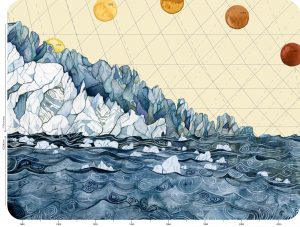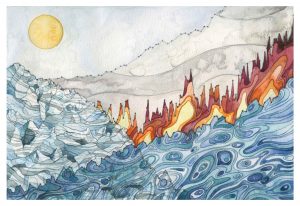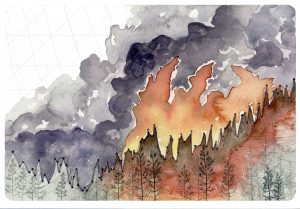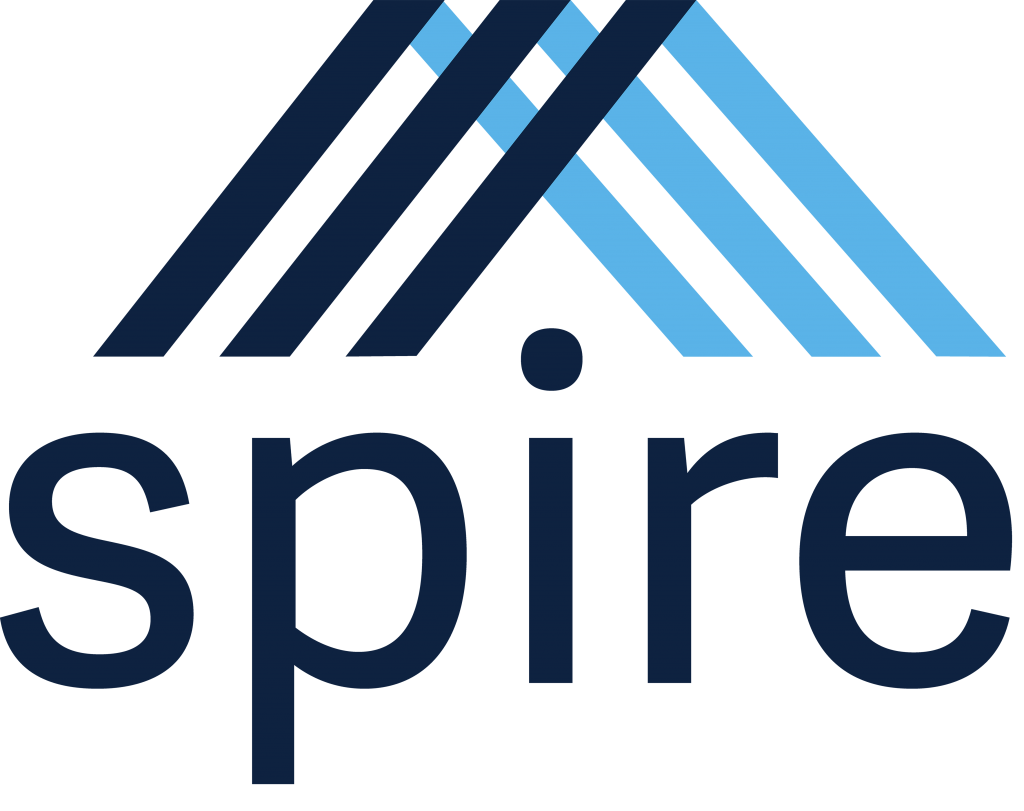Educating for the Future We Want
Jaimie Cloud
Founder and President, The Cloud Institute for Sustainability Education
(Adapted and iterated with permission from excerpts in Educating for a Sustainable Future: Benchmarks for Individual and Social Learning, Journal of Sustainability Education)

Why educate for sustainability?
The unique challenges that define our era — developing sustainable food systems, revitalizing the health of our oceans, improving the health and well-being of people, protecting biodiversity, regenerating the integrity of ecosystems, and accelerating the shift toward a green economy and clean, renewable energy (for example)—require fundamentally new ways of thinking and acting (Capra, 2007; Rockström, 2009; AAAS, 2001; Barstow & Geary, 2002; Larson, 2011; NRC, 2012; NOAA, 2005 and 2009). Our species’ endeavor to achieve a sustainable human future invites reflection on the fundamental question: Education for what purpose? (Orr, 1991 and 2004; Sterling 2001). If humanity is to successfully transition from an unsustainable way of life to a regenerative one, the field of Education for Sustainability (EfS) has a central role to play (Wheeler and Byrne, 2004; DOE, 2011; Assadourian and Renner, 2012; Sterling, 2001; Senge, et al., 2008 and 2012).
“If humanity is to successfully transition from an unsustainable way of life to a regenerative one, the field of Education for Sustainability (EfS) has a central role to play”
Education for Sustainability (EfS) functions as a powerful rationale for teaching and learning in the 21st Century (Sterling, 2001; Wheeler and Byrne, 2004; Cloud, 2010) EfS is a “whole system of inquiry” that combines current best practices of teaching and learning with the content, core competencies, and habits of mind required for students to actively participate in creating a sustainable future (Bergstrom, 2009; Cloud, 2010; ESA, 2012). EfS can be defined as a transformative learning process that equips students, teachers, schools, and informal educators with the knowledge and ways of thinking that society needs to achieve economic prosperity and responsible citizenship while restoring the health of the living systems upon which our lives depend (Cloud, 2004 and 2010).
Education for Sustainability explicitly recognizes the role of teaching and learning in shaping the future we want. In this context, sustainability is viewed as a preferred condition: “A society that is far-seeing enough, flexible enough, and wise enough not to undermine either its physical or its social systems of support” (Meadows, 1992), “a quality of life for all within the means of nature” (Wackernagel, 1995), “the long-term integrity of the biosphere and human well-being” (Chapin et al, 2011), and “The possibility that human and other life will flourish on Earth forever” (Ehrenfeld, 2008).
From a theoretical standpoint, Education for Sustainability draws on multiple research based teaching and learning methodologies. These include backwards design (starting the curriculum planning process with the learning outcomes and forms of evidence in mind), best known as “Understanding by Design” (McTighe and Wiggins, 2004), curriculum mapping tools (Jacobs, 2004), learner centered/assessment driven instruction (Martin-Kniep, 2009), Project-Based Learning (Buck Institute, 2003), Community Based Learning (CBL) (Farnsworth), inquiry-based learning (Bruner, 1996), constructivist learning (Von Glasersfeld, 1995), Place-Based Learning (Smith and Sobel) and Professional Learning Communities (DeFore and Eaker, 1998). EfS provides teachers and learners with an inspiring mission—to participate in creating a sustainable future—and pedagogical and content pathways that support whole systems thinking and design. This truly represents one of the “grand challenges” of our time.
“EfS provides teachers and learners with an inspiring mission—to participate in creating a sustainable future—and pedagogical and content pathways that support whole systems thinking and design.”
Key research informing popular EfS theories of change includes Organizational Learning and Change (Senge), System Dynamics and Systems Thinking (Von Bertallanffy, Ackoff, Capra, Forrester), the Innovation Diffusion Theory (Rogers), Critical Theory (Horkheimer) and Otto Scharmer’s Theory U (Scharmer). Many EfS scholars recognize the essential role that interdisciplinary and cross-sector collaboration play in fostering innovation (Beinhocker, 2006). Education for sustainability is inherently transdisciplinary (NSF SEES, 2012). Comprehensive, anticipatory design solutions (Gabel, 2012) are vital to systemic change. Robert Kates, author of What Kind of Science is Sustainability Science?, writes that “sustainability science is a different kind of science . . . with significant fundamental and applied knowledge components, and a commitment to moving such knowledge into societal action (Kates, 2011). Among the many disciplines and fields that inform EfS are:
Science: Adaptive systems, biology, Earth system science, ecology, environmental science, game theory, global environmental change, green chemistry, neuroscience, oceanography, physics, resilience science.
Engineering & Design: Biomimicry, cradle-to-cradle design and manufacturing, ecological design and architecture, life cycle analysis with full cost accounting, and sustainable communities design.
Education: Climate literacy, ecological literacy, environmental education, design thinking, futures studies, holistic education, gaming to learn, geospatial literacy, global education, holistic education, mindfulness education, oceans literacy, place-based education, social emotional learning, systems thinking, and win-win conflict resolution education.
Social Science & Humanities: Creativity and the arts, ecological psychology, ethics, history and environmental history, philosophy, positive psychology, and the science of happiness.
Currently, there is a large gap between society’s aspirations for a healthy and sustainable future, and the knowledge, skills, and attitudes being taught and acquired in the majority of Pre-K-18 schools and universities. Especially troubling is the speed at which all but a handful of Colleges of Education have embraced Education for Sustainability. Pre-Service Education for teachers has the potential to be a leverage point for systemic change. A long-term goal of the field of Education for Sustainability is to demonstrate the unique value of sustainability as a context for the whole school and curriculum (Stone, 2009), and for the larger community (Sobel, 2004; OFSTED, 2009; Journal of Sustainability Education, 2011).
Research designed to measure the impact of EfS on students, schools and communities should, among other important outcomes, demonstrate that there is a correlation between the practice of EfS (sustained, comprehensive EfS in day-to-day actions of community members and explicit instruction), and the achievement of communities as measured by sustainable community indicators. Research analyzing the effect of EfS programs on students, faculty members, and communities shows multiple, positive and long-term benefits. Examples include: Becker-Klein et al, 2008; Duffin, 2006; AED/Cloud, 2007; Sobel, 2008; Gayford, 2009; Barrat Hacking et al, 2010; PEER Associates, 2010. These particular studies indicate:
EfS Effect on Students:
- Improves student learning and standards achievement
- Enhances attitudes towards learning
- Produces better behavior and attendance (K-12)
- Aligns with people’s natural ability to learn holistically
- Significantly decreases students’ feeling that they cannot succeed
- Encourages students to make connections between themselves and the
- systems of which they are a part
- Develops a greater awareness of community, and a greater appreciation of the
- democratic process
- Produces statistically significant increases in the strength of students’ attitudes
- about civic engagement
- Provides a safe and secure space in which children can take risks and develop
- skills of active participation
EfS Effect on Faculty Members:
- Supports both new and veteran faculty in achieving strong academic
- outcomes from their students
- Yields meaningful effects on teacher attitudes (K-12)
EfS Effect on Schools, Communities & Ecosystems:
- Improves whole school cultures
- Fosters meaningful relationships between the school, parents and the
- Community (K-12)
- Improves children’s health by improving their food choices (K-12)
- Models actions and attitudes that promote sustainable living
- Improves air quality, reduces waste, decreases energy and water use
As the Education for a Sustainable and Secure Future Report (NCSE, 2003) states: “Human and global security, economic opportunity, and the quality of life for humans and all species depends upon the continued availability of a life-sustaining environment.” Pre-K-18 Education for Sustainability is uniquely positioned to help address the challenges of environmental, social, and economic sustainability through sustained innovation in teaching and learning.

State by state, locale by locale, we can catalyze, energize, and advance the field of EfS from a few communities of interest to a robust collection of communities of practice (Wenger, 2006). A community of interest is characterized by pockets of innovation; a need for shared meanings and understandings; limited opportunities for coordinated research and exchange; and a need for more formal structures to grow the field. A community of inquiry is characterized by connecting pockets of research and innovation; promoting interdisciplinary and cross-sector collaboration; defining strategic opportunities, and documenting success stories. A community of practice is characterized by regular opportunities for people to share research and practice; a body of research and literature; formal and informal structures for communications and meetings; and connecting to related networks for the dissemination of knowledge.
Within a community of practice, members make “a commitment to be available to each other, to offer support to share learning, to consciously develop new knowledge. They are there not only for their own needs, but for the needs of others” (Wheatley, 2005). The focus of a community of practice also extends beyond its membership to advance its field and share discoveries with others engaged in similar work (Barlow and Stone, 2011).
Why develop Educating for a Sustainable Future: Benchmarks for Individual and Social Learning? Eighteen years into the 21st Century, students, educators, and decision makers on the ground need to be able to trust that what they are learning and doing, and what they are receiving in the way of assistance, meets the standards for EfS. In order for that to happen, we need to have agreed upon standards of excellence for EfS. Every legitimate field of inquiry has to define and re-define itself over time. If it doesn’t, others will define it, it will disappear, or it will become distorted. A field of inquiry has to establish boundaries for the system of interconnected elements with which it is concerned, and it has to set and re-set the bars of excellence so that those who want to study it, deliver it and assess for it can aspire to the highest degrees of readiness and quality.
For years, many countries from around the world have been examining the attributes of EfS/ESD (Education for Sustainable Development as it is often called around the world) through their federal-level education systems, in Colleges and Universities in general, and Schools of Education in particular. In the U.S. a handful of dedicated thought leaders and scholars, in both NGOs and universities, have studied the historical antecedents—( ex. Leopold (1949) Fuller (1969), Bateson (1972), Armstrong (1970) Meadows (1972), Brundtland (1987), Agenda 21, Chapter 36 (1992), Cajete (1994), The Earth Charter (2000), Orr (2004) to name just a very few) from around the country and the globe, studied the needs for a sustainable future, and created multiple EfS frameworks articulated from our own perspectives. This has made the work rich, robust and relevant for our context.
In response to the call to accelerate, scale and measure the impact of Education for Sustainability across our formal education systems, we asked thought leaders and scholars who have created and continue to study EfS to address the following questions: What is Education for Sustainability (EfS)? What are the “essential ingredients” of EfS that distinguish it from other educational frameworks? What paradigms, knowledge, skills and attitudes characterize EfS? What instructional and engagement practices are congruent? What are the favorable organizational conditions that will make it possible? What types of school/community partnerships are key?
Using grounded theory methodology, forty-two thought leaders, authors and scholars in the U.S. and around the world, made their contributions to “The Essential Elements of Education for Sustainability” Matrix in the 2014 issue of the Journal of Sustainability Education’s series entitled, The State of the Field. Subsequently, a core group of the authors, thought leaders and scholars joined a group of emerging scholars in the field to conduct an analysis of our collective body of work with the goal of developing Benchmarks for EfS. We came together to share, for the first time, our collected works in one place and to synthesize “the State of the Field” and determine what we all agree is essential to educating for a healthy, sustainable and regenerative future. The one thing all the participants had in common was the recognition that all people have to learn how to live well within the means of nature on “Spaceship Earth”.

Educating for a Sustainable Future: Benchmarks for Individual and Social Learning is the result of that synthesis. We combined all grade levels as a starting point—before we attempt over time to determine the developmental appropriateness and depths of knowledge of the different aspects of EfS for different grade level bands (although some of us have already begun to do that in our own work driven by the school, organizations and communities we serve).
It is our intention that these EfS Benchmarks, which should come to represent the whole of our collective thinking to date, will be used by school/university administrators and board members, textbook publishers, parents, faculty, students and the community at large, so that they can assess the extent to which their educational institutions are educating for a sustainable future, and to what extent they are meeting the Benchmarks. More importantly, these EfS Benchmarks can help us to produce and distribute the highest quality EfS programs, curricula and learning experiences, intentionally designed to accelerate the shift toward a healthy and sustainable future.
We believe that to accelerate and scale EfS in formal education, we need to provide a wide range of researchers and practitioners with exemplary EfS materials that reflect the EfS Benchmarks in a way that is accessible and usable. To that end, we will increase the amount of high quality EfS curricula, learning experiences and student work designed, delivered and assessed in schools and universities. In addition, we need to be able to calibrate quality “depths of knowledge” expectations and grade level
appropriateness across disciplines and grade levels. To that end, we need to collect a critical mass of curriculum materials and student work samples to calibrate quality and grade level appropriateness and to create and develop accurate EfS learning progressions and data for the purpose of appropriately evaluating student work, and for the purpose of conducting verifiable research on the results of EfS on students, faculty, school culture and sustainable community development. Therefore, the next step is the “Call for Exemplars”.
A core group of the EfS Benchmarks team is currently building EfS Learning Progressions, a new multi-media repository — a cultural celebration (if you will) of EfS exemplars including curriculum units, courses, assessments, rubrics and other forms of explicit performance criteria, with student work samples, particularly highlighting examples of student leadership actions that are aligned with the EfS Benchmarks. Stories, interviews, discussion, images, narration and film will illustrate and illuminate the contexts and the power of this work on the ground. The repository will serve teachers, professors, researchers, administrators, and curriculum designers by giving them developmentally appropriate “quality anchors” as they design, adapt, and deliver education for a sustainable future. Any evidence of results that translate into verifiable improved sustainable school/community indicators (improved water quality, energy reductions, moves to clean green renewables, improved air quality, student achievement, health and improved school culture, etc.) will be tracked for research purposes. Over time, we will be able to map EfS attributes being targeted and assessed, conduct strengths and gap analyses, and track geographic and demographic data.
In keeping with the thinking that characterizes Education for Sustainability, we have a vision of the role that education can and does play in making the shift toward sustain-ability. We know what our current reality is, and we are using the structural tension between the two to catalyze movement and to increase the momentum we need to effectively educate for the future we want, just in time. We need students and their families and communities to demand it, and we need faculty and administrators to embrace it, embody it and embolden us all.
Note: Green buildings and grounds, procurement, investments, and improved occupant health are critical components of EfS. This document does not include benchmarks for them. We recommend LEED, U.S. Dept. of Education Green Ribbon Schools, CHPS, Eco Schools, Farm to School, and the Living Building Challenge.
References:
Academy for Educational Development (2007). An evaluation of the Cloud Institute’s Business and Entrepreneurship Education for the 21st Century and Inventing the Future curricula. Washington, DC: AED.
American Association for the Advancement of Science (2001). Atlas of science literacy. Washington, DC: AAAS.
Assadourian, E. and Renner, M. (2012). State of the world 2012: Moving toward sustainable prosperity. Washington, DC: Worldwatch Institute.
Barlow, Z. and Stone, M. (2011). Living systems and leadership: Cultivating conditions for institutional change. Journal of Sustainability Education. Volume 2.
Barrat Hacking, E., Scott, B., and Lee, E. (2010). Evidence of Impact of Sustainable Schools. Bath, UK: University of Bath, Center for Research in Education and the Environment. Retrieved April 16, 2010 from http://publications.teachernet.gov.uk/eOrderingDownload/00344-2010BKT-EN.pdf
Barstow, D. & Geary, E. (2002). Blueprint for change: National conference on the revolution in earth and space science education. Cambridge, MA: TERC.
Becker-Klein, R. et al (2008) PEEC Cross-Program Evaluation Progress Report: Findings From Survey Analysis, 2005-2007 Retrieved May 10, 2011 http://www.peecworks.org/PEEC/FV4-0001B458/S017984FB-0179851E
Beinhocker, E. (2006). The origin of wealth: Evolution, complexity, and the radical remaking of economics. Cambridge, MA: Harvard Business School Press
Bergstrom, K. (2009). Education for a Green Economy. A keynote address at the Michigan Science Teachers Association Annual Conference.
Bruner, Jerome S. (1996). The culture of education. Cambridge, MA: Harvard University Press.
Buck Institute for Education. (2003). Project Based Learning Handbook: A guide to standards-focused project-based learning for middle and high school teachers (2nd ed.). Novato, CA.
Capra, F. (2007). What is sustainability? Retrieved March 12, 2007 from http://www.ecoliteracy.org/
education/sustainability.html
Chapin, S. et al (2011). Earth stewardship: Science for action to sustain the human-earth system.
Ecosphere 2 (8). Ecological Society of America.
Cloud, J.P. (2004). Education for sustainability: What is its core content? NAAEE Communicator. 1(10).
Cloud, J.P. (2010). Educating for a sustainable future. Curriculum 21: Essential Education for a Changing World, Chapter 10. Washington, DC: ASCD.
Duffin, M. and PEER Associates (2007). Why use place-based education? Four answers that emerge from the findings of PEEC, the Place-based Education Evaluation Collaborative. Retrieved May 10, 2011 from http://www.peecworks.org/PEEC/PEEC_Reports/S01248363-0124838.
DuFour, R., and Eaker, R. (1998). Professional learning communities at work: Best practices for enhancing student achievement. Bloomington, IN: National Education Service.
Ecological Society of America (ESA) Earth Stewardship (program website). Retrieved July 2, 2012 from http://www.esa.org/earthstewardship
Ehrenfeld, J. (2008). Sustainability by Design. New Haven: Yale University Press.
Gabel, M. (2012, pre-release). Environmental design science primer. Media, PA: Big Picture Small World, Inc.
Gayford, C. (2009) Learning for sustainability: From the pupils’ perspective. Godalming, Surrey: World Wide Fund for Nature http://assets.wwf.org.uk/downloads/wwf_report_final_web.pdf
Jacobs, H.H. (2004). Getting results with curriculum mapping. Alexandria, VA: ASCD.
Journal of Sustainability Education (2011). How our Teaching Changes our Thinking, and How our Thinking Changes the World: A Conversation with Jaimie Cloud. Retrieved from http://www.jsedimensions.org/wordpress/2011-living-and-learning-sustainability
Kates, R. (2011). What kind of science is sustainability science? Retrieved from http://www.pnas.org/site/misc/sustainability.shtml
Larson, B. (2011). Metaphors for environmental sustainability: Redefining our relationship with nature. New Haven, CT: Yale University Press.
Martin-Kniep, G. (2005). Becoming a better teacher: Eight innovations that work. Upper Saddle River, NJ: Pearson/Merrill Prentice Hall.
McTighe, J. and Wiggins, G. (2004). Understanding by design: Professional development workbook. Alexandria, VA: ASCD.
Meadows, D. et al. (1992). Beyond the limits: Global collapse or a sustainable future. Oxford, England: Earthscan Publications.
National Council for Science and the Environment (2003). Education for a sustainable and secure future. Washington, DC.
National Oceanic and Atmospheric Administration (2009). Climate literacy: The essential principles of climate science. Silver Springs, MD.
National Research Council (2012). A framework for K-12 science education: Practices, crosscutting concepts, and core ideas. Washington, DC: National Academies Press.
National Science Foundation Science, Engineering, and Education for Sustainability (SEES) Program Fact Sheet (January 2012): SEES fact sheet_January 2012.docx
Office for Standards in Education, Children’s Services and Skills (2009). Education for Sustainable Development: Improving Schools – Improving Lives. Manchester, UK. http://www.ofsted.gov.uk/resources/education-for-sustainable-development-improving-schools-improving- lives
Orr, D.W. (2004). Earth in mind: On education, environment, and the human prospect. Washington, DC: Island Press.
Orr, D.W. (1991). Ecological literacy: Education and the transition to a postmodern world. Albany, NY: SUNY Press.
PEER Associates (2010) A PILOT Evaluation of Ferry Beach Ecology School’s SELU Program 2009 – 2010 Retrieved May 10, 2011 from http://www.peecworks.org/PEEC/PEEC_Research/S0179A8F3-0179A8FF
Rockström, J. et al. (2009). Planetary boundaries: Exploring the safe operating space for humanity. The
Resilience Alliance.
Senge, P., Smith, B., Kruschwitz, N., Schley, S., and Laur, J. (2010). The Necessary revolution: Working together to create a sustainable world. New York, NY: Crown Business.
Sobel, D. (2004). Place-based education: Connecting classrooms and communities. Great Barrington, MA: The Orion Society.
Sobel, D. (2008). Nature and children: Design principles for educators. Portland, ME: Stenhouse Publishers
Sterling, S. (2001). Sustainable education: Re-visioning learning and change. Bristol, England: Schumacher Society.
Stone, M. (2009). Smart by nature: Schooling for sustainability. Berkeley, CA: Center for Ecoliteracy.
U.S. Department of Education, Office of the Undersecretary, Proceedings from the Sustainability Education Summit, September 20-21, 2010, Washington, DC 2011. Retrieved from http://www2.ed.gov/about/ reports/strat/sustainability/summit-2010.doc
Von Glasersfeld, E. (1995). A constructivist approach to teaching. In L. Steffe & J. Gale (Eds.) Constructivism in Education, New Jersey: Lawrence Erlbaum Associates, Inc.
Wenger, E. (2006). Communities of practice. Retrieved November 27, 2006 from http://www.ewenger.com/theory/index
Wheatley, M. (2005). Finding our way: Leadership for an uncertain time. San Francisco, CA: Berrett-Koehler Publishers, Inc.
Wheeler, K., Byrne, J. & Deri, A. (2004). Learning and education for sustainability. International Review for Environmental Strategies. Vol. 4 No. 1 (p. 95-105).

